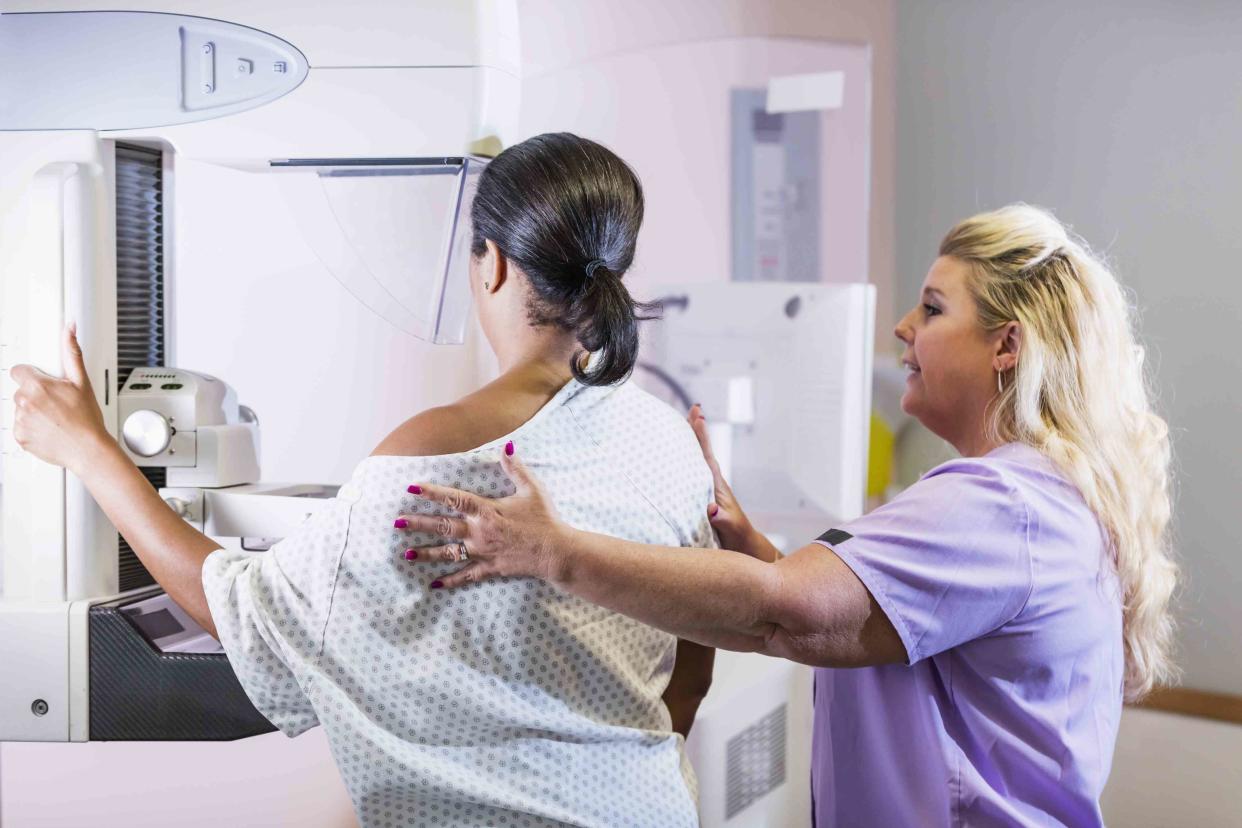Mammograms Should Begin at Age 40, USPSTF Says

Kali9 / Getty Images
Key Takeaways
New USPSTF guidelines recommend mammograms for women starting at 40.
This lowers the age from 50, which was previously recommended.
A steady increase in breast cancer cases in women in their 40s is the root cause of the updated guidelines.
Mammograms for women who turn 40 became a priority again this week after the U.S. Preventive Task Force (USPSTF) updated their guidelines recommending all women start getting screened for breast cancer at the age of 40 and continue every other year until age 74. Previous guidelines recommended women start getting screened at age 50 or earlier with risk factors.
An increase in younger women developing early-onset (younger than 50) breast cancer is the driving force behind the update. Earlier screenings will save more lives, especially among Black women, who are 40% more likely to die of breast cancer.
“Based on a couple lines of evidence, including an epidemiology study, women being diagnosed with breast cancer in their 40s has been steadily increasing by 2% a year,” USPSTF chair Carol Mangione, MD, a professor of medicine and public health at UCLA, told Verywell. “Early screenings at age 40 can save about 20% more lives.”
The new USPSTF guidelines also say there is insufficient evidence on the most effective way to screen dense breast tissue. Half of women have dense breast tissue, which makes it harder for a mammogram to detect potential tumors.
A Note on Gender and Sex Terminology
Verywell Health acknowledges that sex and gender are related concepts, but they are not the same. To reflect our sources accurately, this article uses terms like “female,” “male,” “woman,” and “man” as the sources use them.
Related: Why Is Cancer Rising In Young Adults?
Why Every Other Year?
With early-onset breast cancer cases on the rise, many are wondering why the guidelines recommend screening every other year as opposed to an annual screening. The USPSTF said its decision is based on the balance between risk and benefit. A major risk is false-positive results, which occur in about 50% of women—especially those who are younger.
“It is something we looked into very carefully,” Mangione said. “We looked at different modeling studies and we found the benefit of screening every year does not outweigh the harm from false positive results.”
While getting a false positive might not sound like a big deal, Mangione highlights the negative toll it can take on a person who receives an incorrect diagnosis. These negative outcomes can include:
Stress and anxiety
Unnecessary biopsies
Overdiagnosis (leading to unnecessary treatment)
Increased risk of breast cancer incidence
Related: How Younger Women Can Access Mammograms
Will Insurance Cover Mammograms for People in Their 40s?
The new guidelines not only recommended screening start at age 40; they also changed the grade of the recommendation from a grade C to a grade B. This impacts how insurance companies respond. If you have health insurance and are in your 40s or older, your mammogram should be covered.
Takeaway
Grade B: The USPSTF recommends the service. There is high certainty that the net benefit is moderate or there is moderate certainty that the net benefit is moderate to substantial. Practices should offer or provide this service.
Grade C: The USPSTF recommends selectively offering or providing this service to individual patients based on professional judgment and patient preferences. There is at least moderate certainty that the net benefit is small. Practices have a choice to offer the service for individual patients.
While this upgrade ensures that insurance companies pay for mammograms starting at age 40, the Affordable Care Act actually introduced this requirement back in 2016. Breast cancer services, including mammograms, need to be covered by all private insurance companies and Medicaid for women ages 40 to 74 with an average risk for breast cancer.
What This Means For You
In order to catch early-onset breast cancer, women should start getting mammograms at age 40.
While the USPSTF recommendations state that screenings should be done every other year, you should talk with your primary care physician about your specific circumstances to determine if an annual exam is beneficial, including the possibility of secondary imaging if you have dense breast tissue.
Read the original article on Verywell Health.


